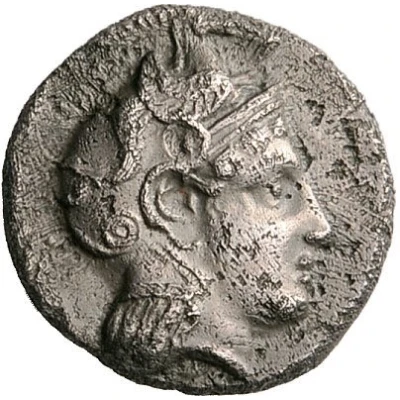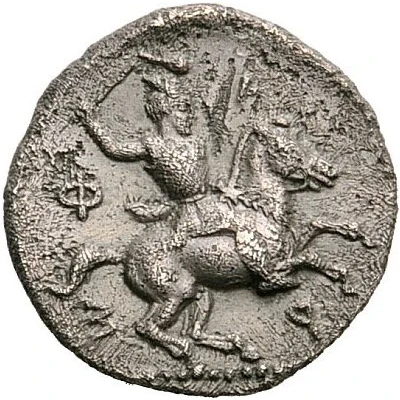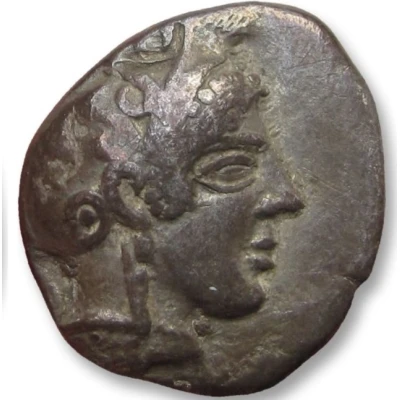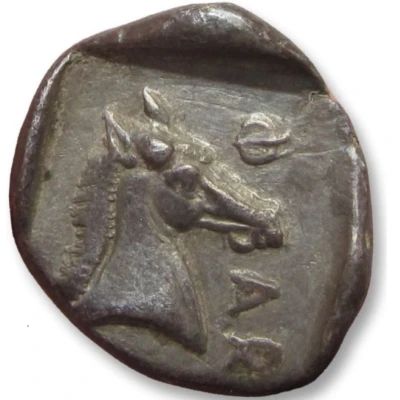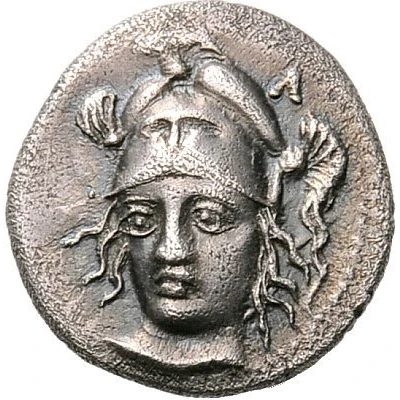
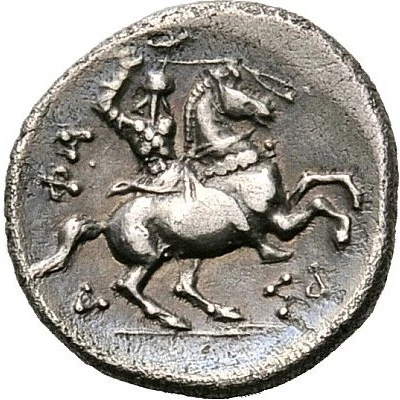

© Nomos AG
Trihemiobol 425 BC - 375 BC
| Silver | 1.31 g | - |
| Issuer | Pharsalos (Thessaly) |
|---|---|
| Type | Standard circulation coin |
| Years | 425 BC - 375 BC |
| Value | Trihemiobol (¼) |
| Currency | Drachm |
| Composition | Silver |
| Weight | 1.31 g |
| Shape | Round (irregular) |
| Technique | Hammered |
| Demonetized | Yes |
| Updated | 2024-10-10 |
| Numista | N#171247 |
|---|---|
| Rarity index | 100% |
Reverse
Armored warrior riding prancing horse to right, brandishing a flail with two balls at the end of its chain
Script: Greek
Lettering: Φ Α Ρ Σ Α
Comment
Lavva 263 var. (O 147/R -).
Interesting fact
The Trihemiobol coin was used as a form of currency in ancient Greece, specifically in the city-state of Pharsalos (Thessaly) during the 4th century BC. The coin's name "Trihemiobol" comes from the Greek words "tri" meaning three, "hēmi" meaning half, and "bolos" meaning throw, which refers to the coin's value being equal to three half-drachmas or three obols. This coin was made of silver and weighed approximately 1.31 grams. It's fascinating to think that over 2,000 years ago, people used coins like this in their everyday transactions, and now they are valuable collector's items that provide a glimpse into the past.
Price
| Date | Mintage | VG | F | VF | XF | AU | UNC |
|---|---|---|---|---|---|---|---|
| ND (425 BC - 375 BC) | - | - | - | - | - | - |
Values in the table are based on evaluations by sales realized on Internet platforms. They serve as an indication only for Trihemiobol (425 BC - 375 BC) coin.
